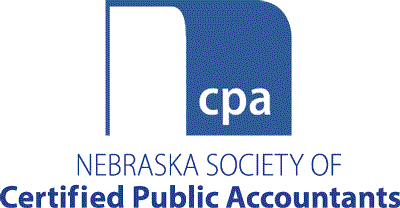Audits of 401(k) plans are common practice in the accounting profession, whether required for Form 5500 reporting purposes or completed on a voluntary basis. The Employee Retirement Income Security Act of 1974, as amended (ERISA), and the Internal Revenue Code of 1986, as amended (the Code) are the primary laws that govern 401(k) plans and under which most issues arise. A failure to identify and correct errors that arise in connection with a 401(k) plan audit risks exposing the plan to potential liability or disqualification. This article is intended to provide a brief overview of some of the more common issues that arise in auditing 401(k) plans, the rules that apply to those issues, as well as potential resolutions. The following overview is not intended as an exhaustive overview of the potential issues that can arise in connection with a 401(k) plan audit and professional advice should be consulted when issues do arise in auditing 401(k) plans.
Delinquent Remittance of Elective Deferrals
The U.S. Department of Labor (the Department) takes the position that a participant’s elective deferrals must generally be remitted to the plan as soon as such amounts can reasonably be segregated from an employer’s general assets, but in no event later than the 15th business day of the month following the month such amounts are withheld from an employee’s wages or are received by the employer. Late remittance of elective deferrals may constitute an operational failure, which may disqualify the plan or lead to other potential liability exposure. The general rule of thumb is to remit elective deferrals in conjunction with the operation of an employer’s payroll functions. Additionally, if elective deferrals are not remitted under the timeframe set forth by the Department, the elective deferrals could be characterized as plan assets, at which point the employer could arguably be engaged in a prohibited transaction.
To the extent an employer fails to timely remit an employee’s elective deferrals, the employer can correct the error pursuant to the Employee Plans Compliance Resolution System (EPCRS). The applicable correction procedure would be for the employer to remit all late deferrals to the plan plus earnings. Under EPCRS, an employer may be eligible to self-correct the error or the employer may be required to complete a voluntary correction procedure (VCP) filing with the Internal Revenue Service (IRS), depending on the circumstances. To correct a prohibited transaction, the employer should proceed under the Department’s Voluntary Fiduciary Correction Program (VFCP).
Discrimination/Compliance Testing Failures
Discrimination or compliance testing applies to all qualified plans to ensure plans do not discriminate in favor of (or excessively benefit) highly compensated employees. Typically, the plan’s record keeper or third-party administrator will conduct annual non-discrimination testing for the plan. Generally, a plan must satisfy: (i) coverage testing under Code Section 410(b); (ii) the annual deferral percentage (ADP) test under Code Section 401(k)(3); (iii) the annual contribution percentage (ACP) test under Code Section 401(m)(2); (iv) the annual additions test under Code Section 415(c); (v) the annual deferral limit test under Code Section 402(g); and (vi) the top heavy test under Code Section 416. However, a safe harbor 401(k) plan is exempt from the ADP and ACP tests.
Specific correction procedures apply for each of the foregoing testing components and an evaluation of each of those procedures is outside the scope of this article. However, in general, compliance testing errors may be corrected under EPCRS and an employer should assess the extent of the errors to determine whether self-correction is available or whether a VCP must be filed. For example, failure to pass the ADP test is characterized as an operational failure under EPCRS and one self-correction method available to fix such an error would be to make a qualified non-elective contribution (QNEC) to non-highly compensated employees to raise the ADP to a level that would pass the ADP test.
Incorrect Application of the Definition of Compensation
The definition of compensation is an integral part of every plan. The definition of compensation is used for purposes of calculating deferrals, allocations, and testing, among other things. In addition, for testing purposes, the definition of compensation must comply with Section 415(c)(3) of the Code. Notably, a participant’s compensation cannot exceed the limit set forth in Code Section 401(a)(17) ($330,000 for 2023) for any plan year in calculating deferrals and allocations. Typically, compensation will be defined as wages and salary, fees for professional services, commissions and tips, and bonuses. In certain situations, the plan sponsor may not use the appropriate definition of compensation in determining an employee’s deferrals and allocations, which may give rise to excess deferrals/contributions or insufficient deferrals/contributions based on an employee’s true compensation, as defined in the plan.
Failure to follow the plan’s definition of compensation is an operational failure under EPCRS and, depending on the circumstances, the error may be self-corrected or the error may need to be fixed through a VCP filing with the IRS. As a general matter, however, the correction would be the same if self-corrected or through the VCP process. If an employee made excess elective deferrals, a distribution should be made to the participant of the excess deferrals plus earnings. Also, matching contributions related to the excess deferrals (adjusted for earnings) should be forfeited and reallocated to other participants or to an unallocated account to offset future matching contributions. If an employee made deferrals that were less than what should have been made had the correct definition of compensation been used, the employee should receive a corrective QNEC in the appropriate amount. Also, the employee should receive a corrective employer-matching contribution, if applicable, in the appropriate amount.
Excess Deferrals/Allocations
The maximum amount that an employee may elect to defer into a qualified plan may not exceed the limit imposed under Code Section 402(g), which is $22,500 for 2023, without regard to any catch-up contributions. Also, the maximum total amount (including employee deferrals and employer contributions) that may be allocated to an employee’s account cannot exceed the lesser of 100% of an employee’s compensation (up to $330,000 in 2023) or the Code Section 415(c) limit ($66,000 in 2023). In the event an employee makes deferrals in excess of the Code Section 402(g) limit, the excess deferrals must be distributed to the employee by April 15 of the year following the year of deferral. If the excess deferrals are not distributed by the April 15 deadline, the plan will need to correct the error through the applicable procedure under EPCRS. To the extent an employee receives allocations (employee deferrals and employer contributions) in excess of the Code Section 415(c) annual additions limit, a general three-step correction procedure applies to correct the error, which is outlined under EPCRS.
Excess Participant Loans
Participant loans may or may not be allowed under a plan and plan sponsors should ensure their plan document allows participant loans before allowing an employee to borrow money from the plan. Participant loans must satisfy several rules under Code Section 72(p), among other rules, so the loan is not treated as a taxable distribution. For example, a loan generally cannot exceed 50% of an employee’s vested account balance, up to a maximum of $50,000; provided, however, a loan of up to $10,000 is nontaxable even if the amount exceeds 50% of the employee’s vested account balance, if permitted by the plan. In the event a plan loan exceeds the limitations under Code Section 72(p), the affected employee must repay the excess loan and, if needed, re-amortize the remaining principal balance over the loan’s original amortization schedule. The foregoing is only one aspect of the rules under Code Section 72(p) and any excess plan loans should be more fully analyzed to ensure compliance with Code Section 72(p). The correction of excess participant loans is generally the same under self-correction and VCP, but the circumstances will dictate whether self-correction is available.
The foregoing represents only a few of the most common potential errors that could arise in connection with any 401(k) plan audit. Any professional reviewing a 401(k) plan’s operations should understand all the potential issues that could impact the operation of the 401(k) plan. The use of a 401(k) plan audit is a useful tool used to identify and resolve any issues that do arise.
Peter Langdon is an attorney in Koley Jessen’s Employment and Benefits Department. With extensive experience advising clients on employee benefits, executive compensation, nonqualified deferred compensation, and general employment law matters, he is well-equipped to navigate the complex landscape of employee benefits. For further inquiries, contact Langdon at peter.langdon@koleyjessen.com.











